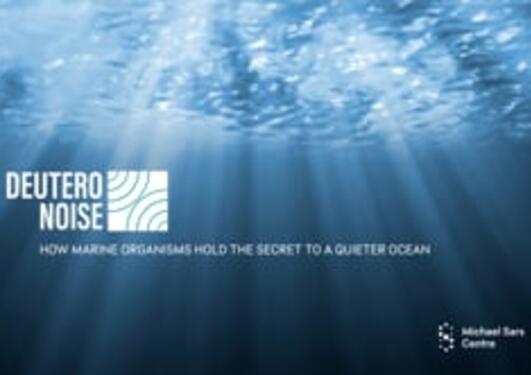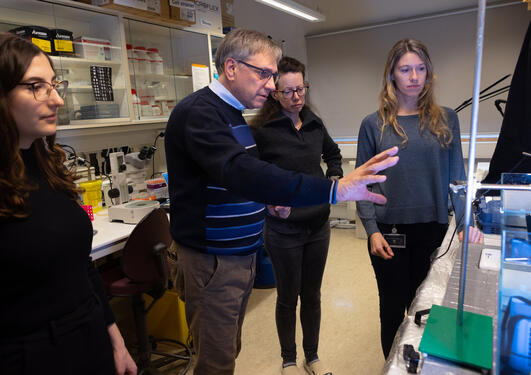New technology helps investigate the impact of noise pollution on our oceans
At the Michael Sars Centre, the group of Marios Chatzigeorgiou develops unique tools to study underwater noise as part of the pan-European project DeuteroNoise.
Main content
Anthropogenic activities in the sea produce high levels of noise pollution, impacting the health of marine ecosystems. This effect is particularly understudied in invertebrate animals, despite their ecological significance. Under the lead of Prof. Lucia Manni from the University of Padova, the DeuteroNoise project brings together a multi-disciplinary team of scientists from Italy, Spain, Romania, and Norway to address this important issue. “We have learned that the marine invertebrate deuterostomes we are focusing on are negatively impacted by noise at different developmental stages from embryos, larvae, juvenile to adult organisms, and at different levels both behavioral, physiological, and molecular,” Manni explained.

Emma Krokeide sets up a noise experiment with adult tunicates.
In a custom aquarium fitted with waterproof speakers and lights, two sea squirts stand upright. After giving them time to adjust to their environment, research intern Emma Krokeide flicks a switch, and waterfall-like ‘pink noise’ fills the room. As part of their curriculum at the Faculty of Science and Technology, Krokeide and fellow Molecular Biology (MolBio) bachelor’s student Eldar Ringstad Loen have chosen to join the Chatzigeorgiou group at the Michael Sars Centre. “I am doing a module this semester called MOL231 and will only be a part of the DeuteroNoise project during this semester”, Krokeide explains. “My role in the project is helping capture the behavior of Ciona intestinalis”.
The computational aspect of the work was particularly attractive to the MolBio students. “With my degree I hope to specialize in the bioinformatics side of molecular biology, and this project uses its own program, and lets us try using machine learning,” Krokeide said. For Ringstad Loen, conducting and optimizing experiments with this novel equipment is a highlight of the internship. “My favorite parts of the research is maybe the multitude of different experiments we do”, he said. “Sometimes you have to tinker and adjust protocols”.

To follow the movements of the animals, the students use a software developed by the Chatzigeorgiou group.
To explore this uncharted field of research, the team had to collaborate to develop new technological solutions. In the Chatzigeorgiou group, researchers use a custom sound system to expose adult and larval tunicates to noise. To study the behavior of the small, fast-swimming larvae, they built an elaborate setup where cameras record the animals’ movements in small arenas under controlled conditions. The analysis of the data is performed using a tracking software developed by engineers in the group. “A key challenge we faced was to combine for the very first time our sound delivery system with high-resolution video acquisition in the same experimental tanks”, Group leader Marios Chatzigeorgiou explained. “Another issue we faced was how to analyze hundreds of hours of videos in which our animals were responding to noise pollution. We had to train several deep neural networks using the high-end computational resources of our laboratory".

Larvae are placed in small arenas under cameras, and their movement recorded throughout the experiment.
As the DeuteroNoise project nears the halfway mark of its completion, the consortium gathered in Bergen for a Mid-Term Meeting. “The Michael Sars Centre has top-notch lab facilities, so I guess the partners may see the potential for experimental work here and wish to collaborate even more with the Centre in the future. I hope one collaboration triggers the next, and that the network to other countries in Europe keeps expanding”, said Marine Dean Øyvind Fiksen, who opened the meeting. The two-day event offered a platform for the sound experts to share their progress and discuss the next steps of the international collaboration. It was also an opportunity for Eldar and Emma to share their work at an international meeting for the first time, an important step of their training as they plan to pursue research work in the future.








